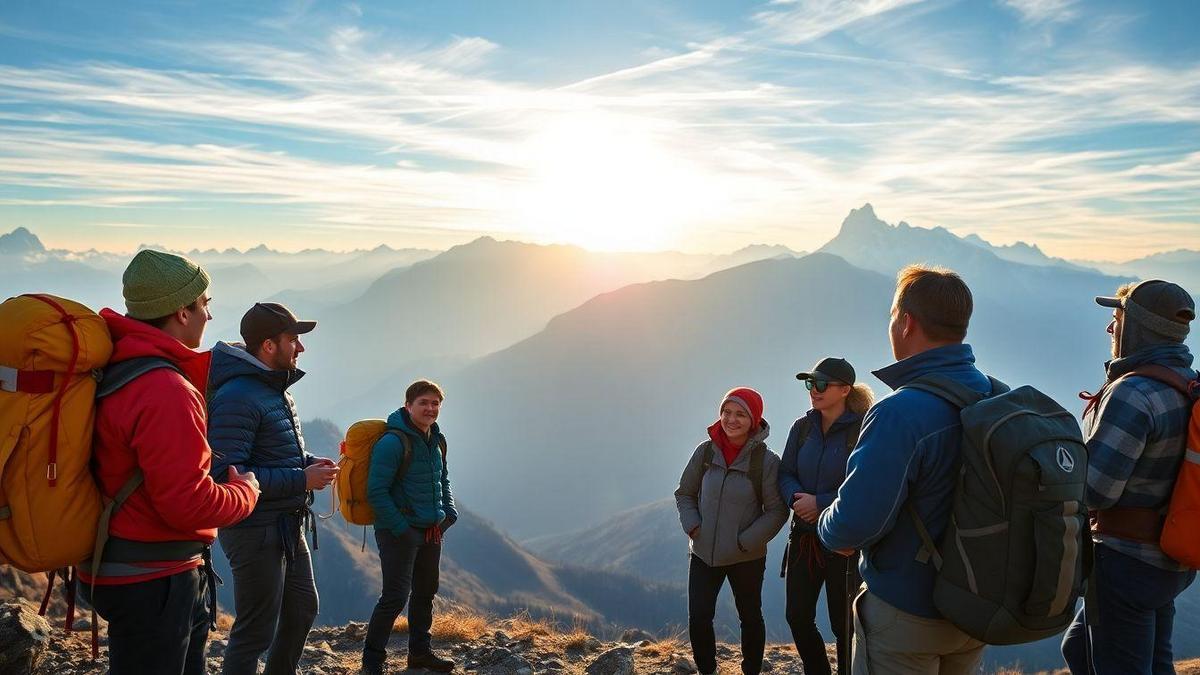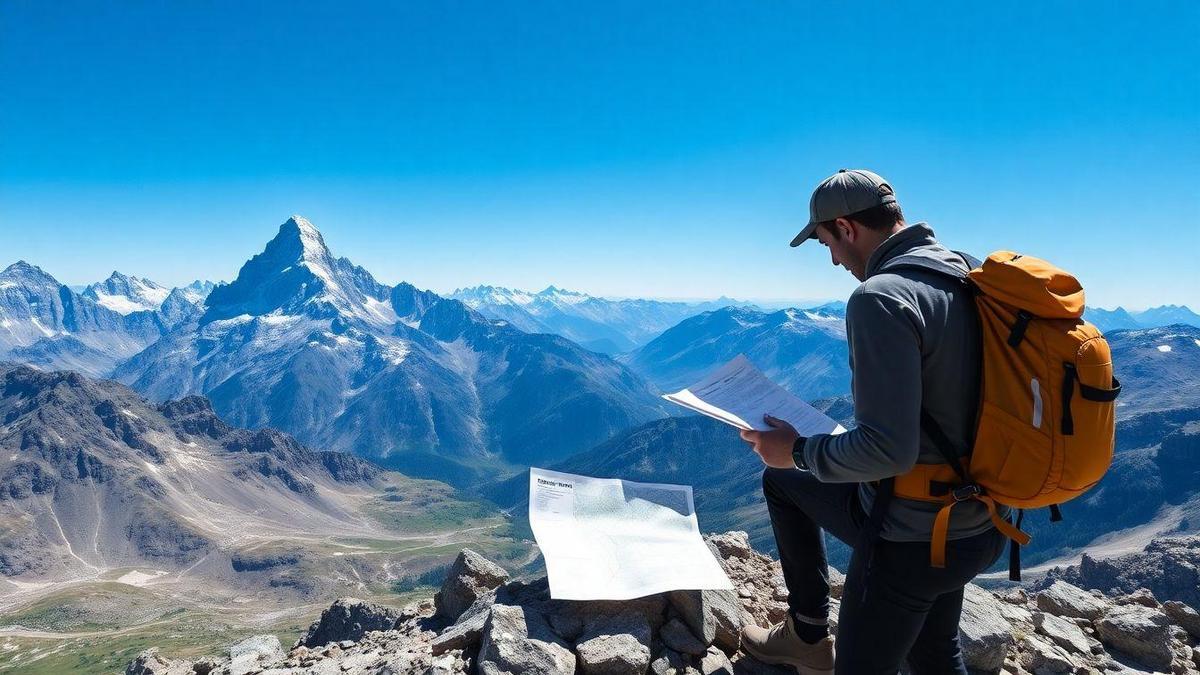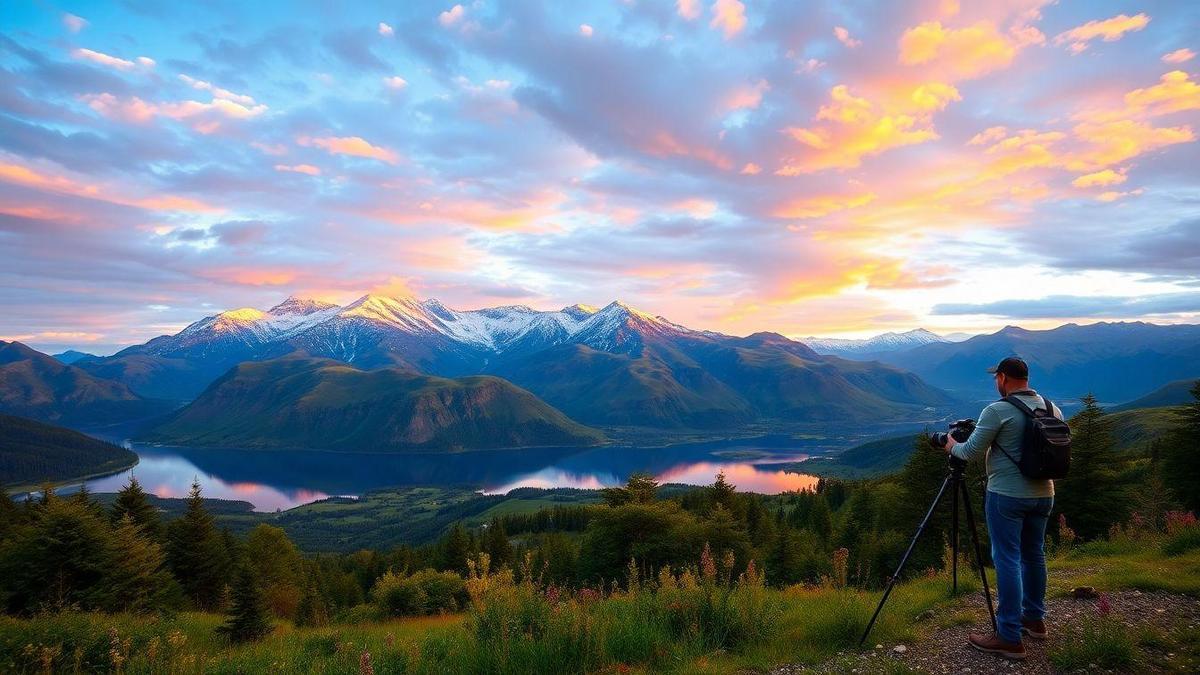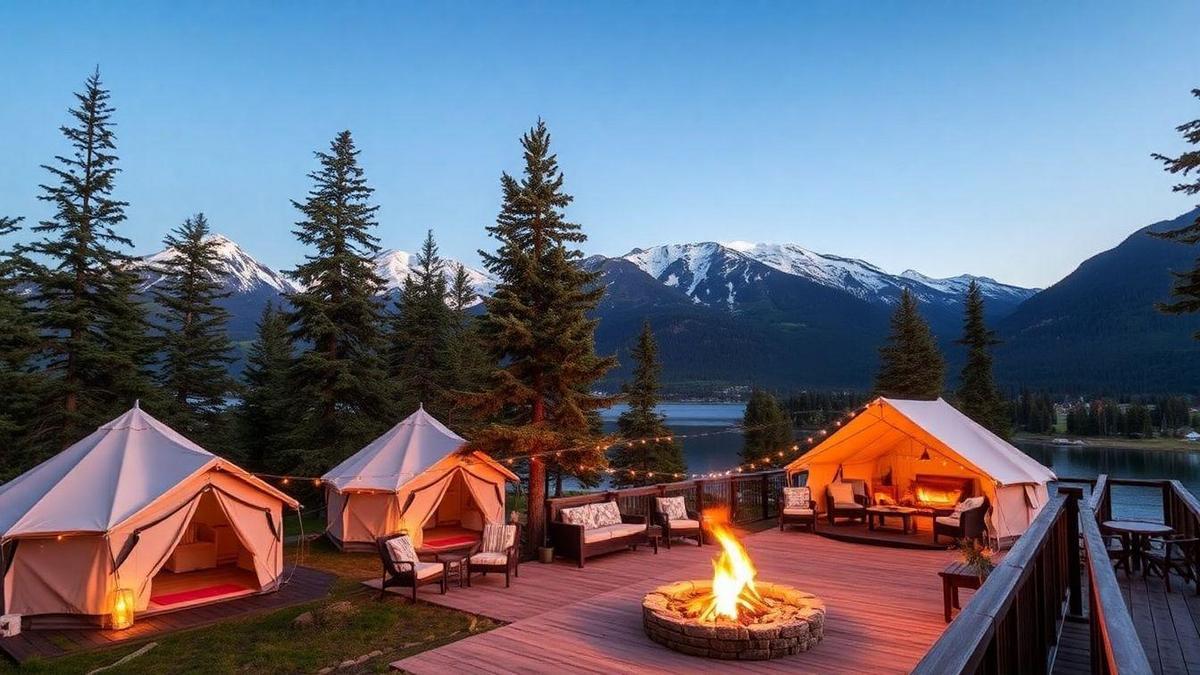
Understanding Mental Preparedness for Inexperienced Climbers
The Importance of Mental Readiness
When you think about climbing a mountain, it’s easy to focus on the physical challenges. But mental readiness is just as crucial. Climbing can be a stressful experience, especially for those who are inexperienced. If you’re not mentally prepared, you might feel overwhelmed or anxious, which can cloud your judgment and lead to poor decisions.
Imagine standing at the base of a towering peak. The view is breathtaking, but that nervous feeling creeps in. You might start to doubt your skills or worry about what lies ahead. This is where mental preparedness steps in. It helps you stay calm, focused, and ready to tackle the climb.
How Mental Preparedness Affects Safety
Your state of mind plays a big role in your safety while climbing. If you’re feeling anxious or scared, it can lead to mistakes. For example, if you rush because you feel pressured, you might skip important safety checks.
Here’s a simple table that shows how mental readiness can impact your climbing experience:
| Mental State | Impact on Climbing | Safety Risk |
|---|---|---|
| Calm and Confident | Better decision-making | Lower risk of accidents |
| Anxious or Doubtful | Overlooking safety measures | Higher risk of mistakes |
| Focused and Prepared | Ability to handle challenges effectively | Improved overall safety |
Building a Strong Climbing Mindset
Creating a strong climbing mindset takes time and practice. Here are some tips to help you get started:
- Visualize Success: Before your climb, take a moment to picture yourself at the top. This can boost your confidence.
- Practice Mindfulness: Stay present in the moment. Focus on your breathing and the task at hand.
- Set Realistic Goals: Don’t aim for the summit on your first try. Break your climb into smaller, achievable goals.
- Learn from Others: Talk to experienced climbers. They can share their stories and tips that might help you.
By working on your mental preparedness, you’ll not only improve your climbing experience but also enhance your safety.
Essential Tips for Mental Preparedness Precautions
Visualization Techniques for Success
When you’re preparing to climb a mountain, visualization can be a powerful tool. Picture yourself at the top, feeling the wind on your face and the sense of achievement washing over you. This mental imagery can help build your confidence.
Try to imagine each step of your journey. Visualize the rocky paths, the steep climbs, and even the moments when you might feel tired. By mentally rehearsing these scenarios, you prepare yourself for the challenges ahead. It’s like practicing for a big game; the more you see it, the more ready you become.
Setting Realistic Goals Before Climbing
Setting realistic goals is key to a successful climb. Instead of aiming for the peak right away, break your journey into smaller, achievable steps. This could mean reaching a certain point on the mountain by a specific time or taking breaks at regular intervals.
Here’s a simple way to set your goals:
| Goal Type | Example |
|---|---|
| Short-Term Goals | Reach the first lookout point |
| Medium-Term Goals | Climb for two hours without a break |
| Long-Term Goals | Reach the summit by noon |
By focusing on these smaller goals, you can enjoy the climb more and avoid feeling overwhelmed. Remember, every step counts!
Creating a Personal Climbing Checklist
A personal climbing checklist can be a lifesaver. It helps you remember everything you need and keeps you organized. Here’s a quick list of what to include:
- Climbing gear (harness, ropes, shoes)
- Clothing (layers, waterproof jacket)
- Food and water (snacks, hydration pack)
- First aid kit (band-aids, antiseptic wipes)
- Navigation tools (map, compass)
Having this checklist means you won’t forget anything important. It’s like having a safety net that keeps you grounded.
Managing Anxiety During Mountain Climbing
Recognizing Signs of Anxiety
When you’re out there on the mountain, your mind can play tricks on you. Anxiety can creep in, and it’s important to spot the signs early. Here are some common signs to watch for:
- Rapid heartbeat: You might feel your heart racing.
- Sweating: Even if it’s not hot, you could start to sweat.
- Trembling hands: Your hands might shake a bit.
- Overthinking: You find yourself worrying about every step.
- Feeling dizzy: A sudden wave of lightheadedness can hit.
Recognizing these signs is the first step in managing anxiety. Once you know what to look for, you can take action to calm your mind.
Techniques to Calm Your Mind
When anxiety strikes, it’s time to take a breather—literally! Here are some techniques to help you find your calm:
- Positive Self-Talk: Remind yourself that you’ve trained for this. You can do it!
- Visualization: Picture yourself reaching the summit. Feel that sense of accomplishment.
- Stay Present: Focus on your surroundings. What do you see? What do you hear? This keeps your mind from wandering.
Breathing Exercises for Climbing Calmness
Breathing exercises can be a game changer. They help you get back into the moment and ease your nerves. Here’s a simple exercise to try:
| Step | Action | Duration |
|---|---|---|
| 1 | Inhale deeply through your nose | 4 seconds |
| 2 | Hold your breath | 4 seconds |
| 3 | Exhale slowly through your mouth | 6 seconds |
| 4 | Repeat for 5 minutes |
Doing this exercise can help ground you. When you feel the anxiety rising, take a moment to breathe. It’s like hitting a reset button for your mind.
Decision-Making Under Pressure
How to Make Quick Decisions on the Mountain
When you’re out there on the mountain, every second counts. You might face sudden weather changes or tricky terrain. Here are some ways to help you make quick decisions:
- Stay Calm: Take a deep breath. Panic can cloud your judgment.
- Trust Your Instincts: If something feels off, listen to that gut feeling.
- Assess the Situation: Look around. What are the risks? What are your options?
- Communicate: If you’re with a group, talk to each other. Share thoughts and ideas.
Learning from Past Climbing Experiences
Reflecting on previous climbing trips can be a powerful tool. Think about what went well and what didn’t. Here’s how to learn from those experiences:
- Jot Down Notes: After each climb, write down what you learned.
- Discuss with Friends: Talk about your climbs with fellow climbers. They might share insights you missed.
- Review Decisions: Look back at choices you made during climbs. What would you do differently next time?
Developing Critical Thinking Skills
Building critical thinking skills is key for making smart choices on the mountain. Here are some ways to enhance these skills:
| Skill | Description |
|---|---|
| Problem Solving | Break down challenges into smaller parts. |
| Analyzing Risks | Weigh the pros and cons of each decision. |
| Adaptability | Be ready to change plans if needed. |
By focusing on these areas, you can feel more confident when faced with tough choices on your climbing adventures.
Importance of Risk Assessment for Climbers
Identifying Potential Hazards
When you’re out climbing, safety should always be your top priority. Mountains can be beautiful, but they also hide dangers. Think about things like loose rocks, bad weather, and steep drops. Before you head out, take a moment to look around and spot any possible risks. This is your chance to protect yourself and avoid accidents.
Evaluating Your Skills and Limitations
Next, it’s important to be honest with yourself. Are you ready for this climb? Ask yourself some key questions:
- Have you climbed before?
- Do you know how to use climbing gear?
- Are you physically fit for this hike?
Knowing your strengths and weaknesses can keep you safe. If you feel unsure, consider teaming up with someone who has more experience. Climbing isn’t a race; it’s about enjoying the journey and getting back home safe.
Conducting a Pre-Climb Risk Analysis
Before you set foot on that mountain, do a quick risk analysis. Here’s a simple table to help you:
| Step | Action |
|---|---|
| 1. Check Weather | Look for storms or high winds. |
| 2. Review Map | Know your route and any tricky spots. |
| 3. Gear Check | Ensure your equipment is in good shape. |
| 4. Buddy System | Climb with a friend or group. |
This checklist can help you stay focused and prepared. Remember, mental preparedness precautions for inexperienced mountain climbers are just as important as physical ones.
Building Mental Resilience Through Training
The Role of Mental Resilience in Climbing
When you think about climbing a mountain, physical strength often comes to mind. But don’t overlook the power of your mind. Mental resilience is what keeps you going when the trail gets tough. It’s your inner strength that helps you face challenges, stay calm in stressful situations, and push through when your legs feel like jelly.
Imagine reaching a steep section of the climb. Your body is tired, and doubts creep in. This is where mental resilience shines. It allows you to focus, breathe, and keep moving forward. The ability to control your thoughts can make all the difference between reaching the summit or turning back.
Exercises to Strengthen Your Mind
Building mental resilience takes practice, just like training your muscles. Here are some exercises you can try:
- Visualization: Picture yourself at the top of the mountain. Imagine how it feels—the wind in your hair, the view, the sense of accomplishment. This can help you stay motivated.
- Mindfulness: Spend a few minutes each day focusing on your breath. This helps calm your mind and keeps you centered, especially when things get tough on the climb.
- Positive Affirmations: Repeat phrases like I am strong or I can do this. This simple trick can boost your confidence and keep negativity at bay.
- Challenge Yourself: Take on small challenges outside your comfort zone. Whether it’s a new hiking trail or a tough workout, each small victory builds your mental strength.
Here’s a simple table to help you remember these exercises:
| Exercise | Purpose |
|---|---|
| Visualization | Boosts motivation |
| Mindfulness | Calms the mind |
| Positive Affirmations | Builds confidence |
| Challenge Yourself | Increases resilience |
Incorporating Mental Resilience into Your Routine
Making mental training part of your daily life is key. Here’s how you can weave it into your routine:
- Set Goals: Start with small, achievable goals. Each time you reach one, celebrate it. This builds confidence.
- Daily Reflection: At the end of each day, think about what went well and what you can improve. This helps you learn and grow.
- Stay Connected: Talk to fellow climbers or friends about your experiences. Sharing stories can inspire you and strengthen your resolve.
- Stay Active: Physical activity helps your mind too. Go for a walk, hit the gym, or join a local climbing group. The more active you are, the sharper your mind becomes.
Incorporating these practices will not only prepare you for climbing but also help in everyday life. Remember, mental preparedness precautions for inexperienced mountain climbers are just as important as physical training.
Frequently Asked Questions
What is mental preparedness for mountain climbing?
Mental preparedness means getting your mind ready for climbing. It helps you handle fear, stress, and surprises while climbing.
Why do inexperienced climbers need mental preparedness precautions?
Inexperienced climbers face many challenges. Mental preparedness precautions help you stay calm and focused. It helps you make better decisions on the mountain.
How can I improve my mental preparedness?
You can improve your mental readiness by practicing. Visualize your climb. Breathe deeply when you feel anxious. Talk to other climbers for support.
What should I do if I start feeling scared while climbing?
If you feel scared, take a break. Breathe deeply and focus on your body. Remind yourself of your training and skills. Remember, it’s okay to feel scared.
Where can I find resources on mental preparedness precautions for inexperienced mountain climbers?
Look for books or online articles about climbing. Many climbing schools also offer classes on mental preparedness. Join a climbing group for more tips and support.


